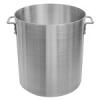I work for a company that produces shell eggs. We have been getting burnt flats in from one of our suppliers. OurUSDA grader doesn't like them (I don't either) so at first we wouldn't use them to pack any product in and sent two trucks back to the supplier. Right now it's basically impossible to find another flat supplier that can make enough flats to supply us along with their already existing customers and we've run out of good flats. Let me pause here to explain that the issue the Grader has is that the burnt flats smell burnt and that gets into the egg so he will retain all product of his that's packed in them. We have no choice but to use them now. So the idea is that he will retain them and then we will appeal his decision. If anyone has any advice or knowledge relating to any of this I would very much appreciate any help!
- Home
- Sponsors
- Forums
- Members ˅
- Resources ˅
- Files
- FAQ ˅
- Jobs
-
Webinars ˅
- Upcoming Food Safety Fridays
- Recorded Food Safety Fridays
- Upcoming Hot Topics from Sponsors
- Recorded Hot Topics from Sponsors
- Food Safety Live 2013
- Food Safety Live 2014
- Food Safety Live 2015
- Food Safety Live 2016
- Food Safety Live 2017
- Food Safety Live 2018
- Food Safety Live 2019
- Food Safety Live 2020
- Food Safety Live 2021
- Training ˅
- Links
- Store ˅
- More














